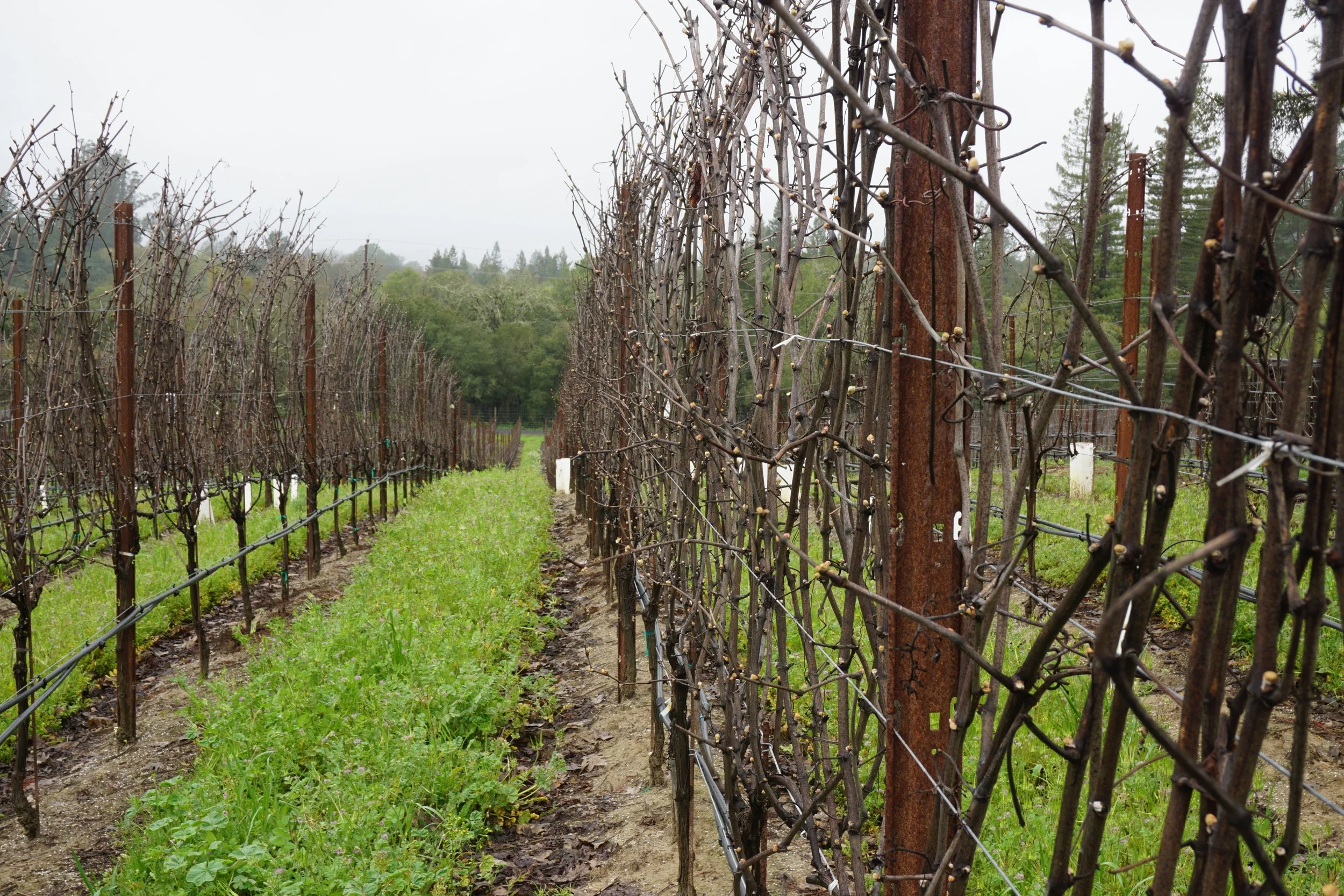On Monday we began the pruning process for a new growing season. The talented crew from Cornerstone Certified Vineyard did an initial pass through the vineyard, cutting off the longer lengths of last year’s canes. This makes it easier for them to view the vine and select the canes they want to keep for this year’s production. Then they select two canes to keep on our Pommard vines and three on the more vigorous Calera vines. The rest of the canes are removed and left in the center of the row to be ground up by the mower and returned to the soil as nutrients.
After the canes are selected and pruned, they are tied to the fruiting wires, supporting them in preparation for the buds to swell, break, and begin to extend new shoots from which the fruit will develop.
In one block, we have decided to graft the existing Pommard to a new grape clone. Decisions are still being made, and we will talk about that more when the grafting happens in April. The crew will wait to rough-prune these vines until a couple of weeks before the grafting work is done to release water pressure on the plant. Then they will cut the tops off and graft on the new grape clone.
Because there’s always a chance of frost in March, pruning as late as we do can actually slow down bud break as it releases water pressure from inside the vine. A frost can kill brand-new open buds, leaving us fewer shoots that grow fruit.
We were excited Monday to see women working on the crew. Pruning decisions set the stage for all that comes this year and next, so the pruning team is made up of only the most talented individuals with the experience necessary to visualize how their decisions will affect the vines’ future.





